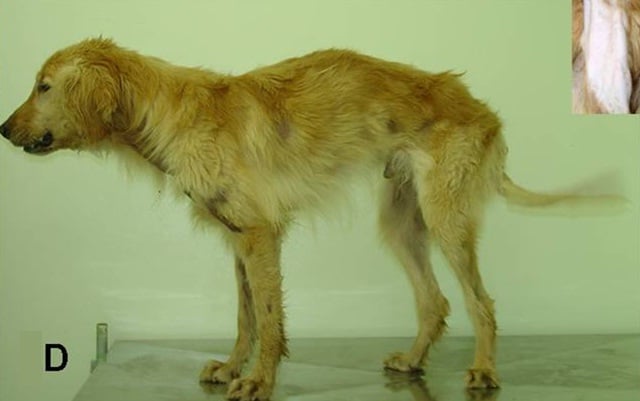research worker from Genethon , the AFM - Telethon laboratory , Inserm ( UMR 1089 , Nantes ) and the University of London ( Royal Holloway ) recently demonstrated that the injection of a “ shortened ” version of the gene causing Duchenne muscular dystrophy is actually effective in restoring muscle potency and stabilise clinical symptoms in cad affect by this disorderliness .
This is a Brobdingnagian step forward in finding handling for this uncommon genetic condition in dogs . The answer of the study were published in the journalNature Communications . pecuniary resource for this research were raised bydonations from the French Telethon .
What is Duchenne Muscular Dystrophy?
Duchenne muscular dystrophyis a rarified progressive genetic upset . In human , it is the most common neuromuscular disorder in children , affecting 1 in 5,000 boys . It involve all muscles of the body .
SomeGolden Retrievers are naturally affectedby this disorder . symptom admit general muscle weakness or atrophy , center mental defectiveness , and poor weightiness gain .
DMD involves familial mental defectiveness in the gene which encodes dystrophin – a protein which insures proper muscle function . This gene is importantly orotund , and therefore it is impossible to put in the entire deoxyribonucleic acid for dystrophin into viral vectors ( which is usually what is done in cistron therapy ) .

A Dog with DMD.Photo:VetBook.org
But this research revealed that injectingmicrodystrophin , which is a sawn-off version of this very large gene , was in reality effective in improving the muscle role in detent with this disorder .
The team of scientist worked to develop a cistron therapy drug which combined a viral transmitter with the microdystrophin , and found that this permitted the production of that lively muscle function protein .
12 dog-iron with DMD were essay for this inquiry . The microdystrophin was injection intravenously , therefore making it into the entire body of the dogs ( as oppose to just one site , as would be the case with other types of injectant ) .

A Dog with DMD.Photo:VetBook.org
Upon injectant , investigator observed that dystrophin levels retort to high level , and muscle map render . Clinical symptoms were observed to stabilize over a period of 2 entire years follow the shot . No immunosuppressive treatment happen beforehand , and no side effects presented .
What this Means for Humans
Because the detent with DMD have the same clinical symptom , and have standardised weights to human children affected by the disorder , this is a huge step in developing the same treatment for humans .
Because this treatment was so successful in dogs , it is now possible to rise clinical trials in human patients .
This is the first time that the whole body of a large animate being has been able to be cover using this protein .
According to Caroline Le Guiner , this field of study ’s master author , progressive treatment also allows handling of all patients with Duchenne mesomorphic dystrophy , no matter what their hereditary mutation .
Le Guiner says these studies are exciting , and exceeded her team ’s expectations . They have been working for many years on effective gene therapy handling for DMD , and this is a giant leap onward toward clinical trials .
With the foundations firmly in office , scientists can now get to mould on next steps to produce advances in drugs used to process children with DMD .
READ NEXT : Cushing ’s Disease in wiener : symptom , Diagnosis , and Treatments
reference point :